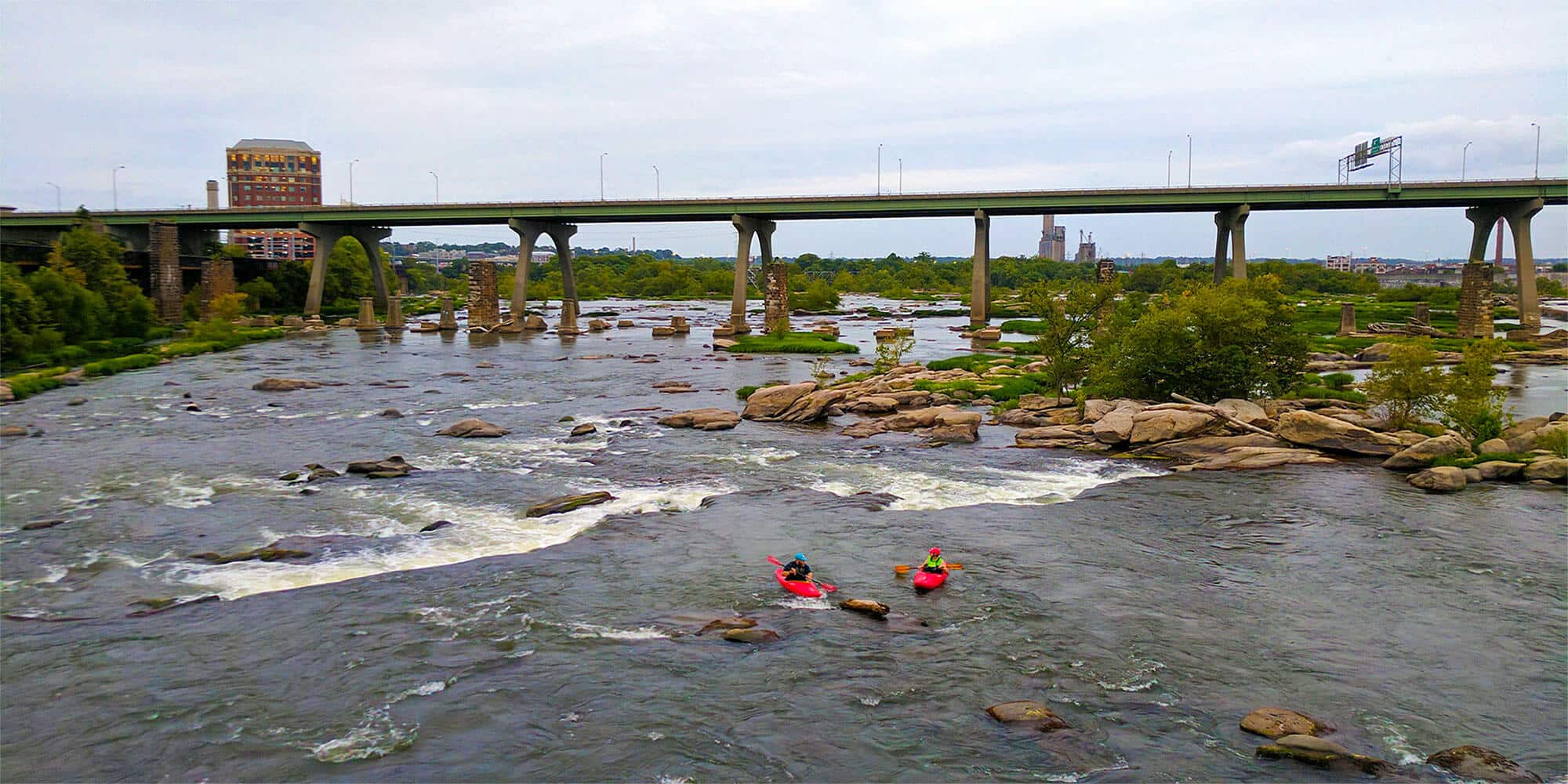Richmond, Virginia: Integrating Clean Water Planning and Implementation
The James River is an important source of drinking water, a draw for economic development, and is valued by residents for recreation and aesthetics. The City of Richmond embarked on an ambitious effort to evaluate water compliance requirements in a coordinated way to increase efficiency and prioritize actions needed to improve and protect water quality.
By Heather Bourne , Environmental Scientist (Washington, DC )
October 31, 2018
The James River is literally and figuratively central to the City of Richmond, Virginia. It is an important source of drinking water, a draw for economic development, and is valued by residents for recreation and aesthetics. The City’s Department of Public Utilities (DPU) is responsible for multiple water-related programs that protect this resource through wastewater treatment, drinking water treatment and distribution, and stormwater and combined sewer management. Historically, each program has been addressed separately with individual regulatory compliance and management requirements. DPU recognized the need for a more holistic approach to managing these programs. In 2014, DPU embarked on an ambitious effort to evaluate water compliance requirements in a coordinated way with an aim to increase efficiency and allow for identification and prioritization of the actions needed to improve and protect water quality. This coordinated approach would then inform an integrated NPDES permit.
LimnoTech developed a methodology for what DPU calls its “Clean Water Plan.” This approach was based on EPA guidance for watershed and integrated planning, but was modified slightly to achieve DPU’s objectives.
With almost four years until the issuance of their next permit, DPU hired LimnoTech to develop an integrated planning process. Our project partners included Troutman Sanders who provided regulatory support and the West Cary Group who provided public outreach and stakeholder communication support.
Starting with a range of existing planning process concepts (e.g., environmental regulatory planning, watershed planning, master planning, integrated permitting, etc.), we developed a methodology for what DPU calls its “Clean Water Plan.” This approach was based on EPA guidance for watershed and integrated planning, but was modified slightly to achieve DPU’s objectives. One key objective was to extensively involve stakeholders from the beginning and through each step of the process.
Disparate strategies (1) can be tied together (2) in Integrated Planning to form a more cohesive, coordinated approach to implementation (Left). The framework used for Integrated Planning in Richmond, Virginia, emphasizes stakeholder involvement through each step of the process (Right).
Watershed characterization was conducted first, to establish watershed boundaries, and to compile and evaluate monitoring data and other information that would help set the stage for the rest of the integrated planning process. Strategy identification and selection came next, and involved extensive coordination with stakeholders to identify the goals and objectives that would provide the foundation for subsequent steps and future decisions. While the integrated planning process was initially driven by NPDES-related regulations, a notable outcome of the goal identification process was that not all goals were water-quality driven. A number of the goals were related to issues such as habitat improvements, removal of invasive species, and land conservation.
Once the goals were established, DPU and LimnoTech continued to work with stakeholders to identify a set of strategies that would achieve these goals. DPU and LimnoTech began planning for program implementation, which included determining the actions that will help the City achieve the greatest gains the fastest. As with other cities, resources for implementation can be limited, and implementation must be done in a piecemeal fashion that may miss opportunities for bigger picture thinking. To help keep an eye on the bigger picture, LimnoTech proposed an approach for implementation that we have successfully used in other urban restoration efforts called Watershed Framework Planning. This concept involves:
- Working with agencies and stakeholders to identify projects and initiatives with potential for joint implementation;
- Identifying opportunities for implementation and funding; and
- Working with all parties to tie potentially disparate strategies into larger, actionable projects.
DPU and LimnoTech began planning for program implementation, which included determining the actions that will help the City achieve the greatest gains the fastest.
It is anticipated that DPU’s Clean Water Plan, Implementation Plan, and integrated NPDES permit will continue to achieve benefits for the City. We already see benefits in internal communication among the City’s water programs, and opportunities to broaden the benefits of DPU’s core water quality mission to benefit the James River, its tributaries, and the people across the City who use and enjoy the water resources of Richmond. We also think that this blend of integrated planning, permitting, and a more coordinated approach to implementation has the potential to be a model for communities around the U.S. who have both water quality and urban development goals.
To learn more about integrated planning, contact Heather Bourne at hbourne@limno.com.
Heather Bourne is a Senior Environmental Scientist with expertise in the areas of stormwater quality issues, watershed management, and aquatic ecology. Heather has played an integral part in the management and development of numerous studies of point and nonpoint source issues. She is currently the Work Assignment Manager for several municipal stormwater clients and provides support with permit negotiations and stormwater program development and implementation. Heather was also the Environmental Monitoring Program Manager for Oklahoma City’s Stormwater Quality Management Section, where she managed and coordinated environmental monitoring projects and developed programs to comply with the City’s NPDES Phase I stormwater permit.







